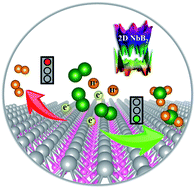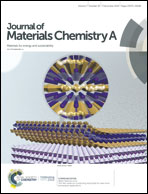Two-dimensional transition metal diborides: promising Dirac electrocatalysts with large reaction regions toward efficient N2 fixation†
Abstract
Catalysts with high conductivity, intrinsic activity, and selectivity are essential and highly sought for the nitrogen reduction reaction (NRR). However, combining these advantages into one material is a grand challenge. Herein, we find that two-dimensional (2D) transition metal diborides (TMBs), TiB2 and NbB2, could act as high-performance electrocatalysts for the NRR with large reaction regions. TiB2 and NbB2 monolayers not only possess unique atomic structures that provide a large number of active catalytic sites for N2 reduction, but also exhibit rich Dirac states and ultrahigh Fermi velocities, which can accelerate charge transfer between catalysts and reaction intermediates. N2 can be reduced to NH3 on the transition atoms of TiB2 and NbB2via an enzymatic mechanism with ultralow limiting potentials of −0.58 and −0.64 V, respectively. In particular, NbB2 monolayers can significantly suppress the hydrogen evolution reaction occurrence, making them a promising NRR electrocatalyst with high efficiency, selectivity, and plentiful active catalytic sites. This work demonstrates the feasibility of 2D Dirac materials for N2 fixation and could provide a useful guideline for further developing NRR electrocatalysts.



 Please wait while we load your content...
Please wait while we load your content...